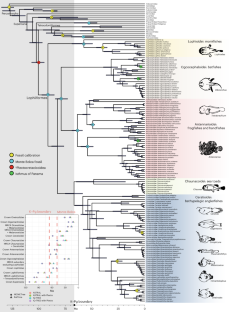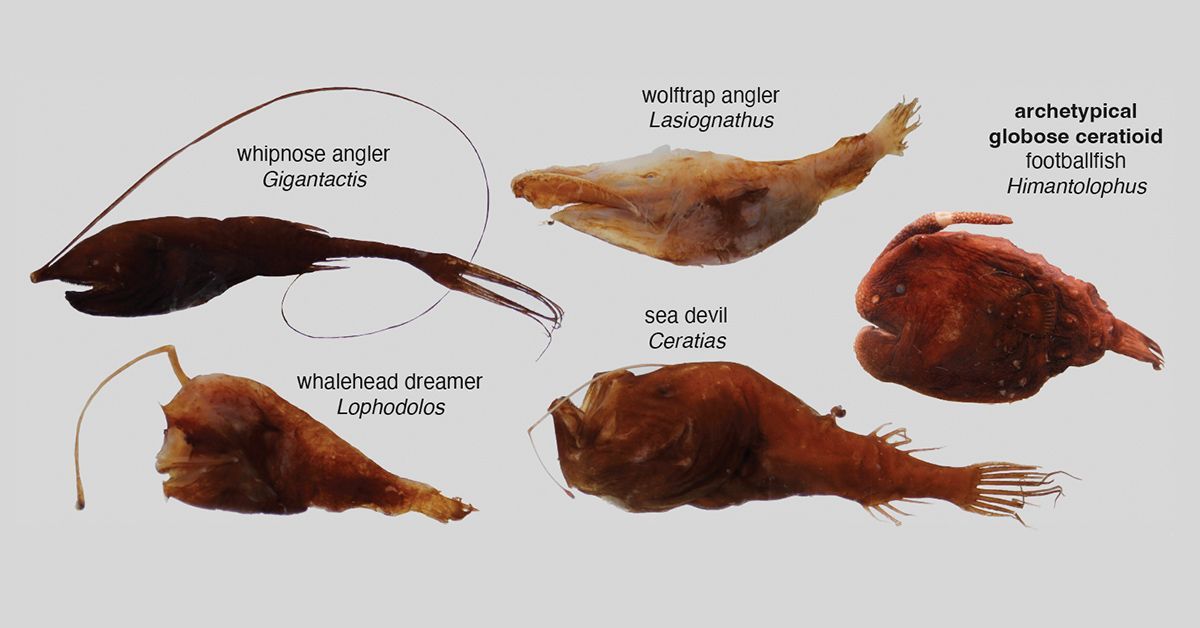2024-12-17 カリフォルニア大学サンディエゴ校 (UCSD)

<関連情報>
- https://today.ucsd.edu/story/evolution-of-deep-sea-anglerfish-illuminated-in-new-study
- https://www.nature.com/articles/s41559-024-02586-3
深海のアンコウ類では進化的制約が減少し、放射化が進行している Reduced evolutionary constraint accompanies ongoing radiation in deep-sea anglerfishes
Elizabeth Christina Miller,Rose Faucher,Pamela B. Hart,Melissa Rincón-Sandoval,Aintzane Santaquiteria,William T. White,Carole C. Baldwin,Masaki Miya,Ricardo Betancur-R,Luke Tornabene,Kory Evans & Dahiana Arcila
Nature Ecology & Evolution Published:27 November 2024
DOI:https://doi.org/10.1038/s41559-024-02586-3

Abstract
Colonization of a novel habitat is often followed by phenotypic diversification in the wake of ecological opportunity. However, some habitats should be inherently more constraining than others if the challenges of that environment offer few evolutionary solutions. We examined this push-and-pull on macroevolutionary diversification following habitat transitions in the anglerfishes (Lophiiformes). We constructed a phylogeny with extensive sampling (1,092 loci and ~38% of species), combined with three-dimensional phenotypic data from museum specimens. We used these datasets to examine the tempo and mode of phenotypic diversification. The deep-sea pelagic anglerfishes originated from a benthic ancestor and shortly after experienced rapid lineage diversification rates. This transition incurred shifts towards larger jaws, smaller eyes and a more laterally compressed body plan. Despite these directional trends, this lineage still evolved high phenotypic disparity in body, skull and jaw shapes. In particular, bathypelagic anglerfishes show high variability in body elongation, while benthic anglerfishes are constrained around optimal shapes. Within this radiation, phenotypic evolution was concentrated among recently diverged lineages, notably those that deviated from the archetypical globose body plan. Taken together, these results demonstrate that spectacular evolutionary radiations can unfold even within environments with few ecological resources and demanding physiological challenges.



